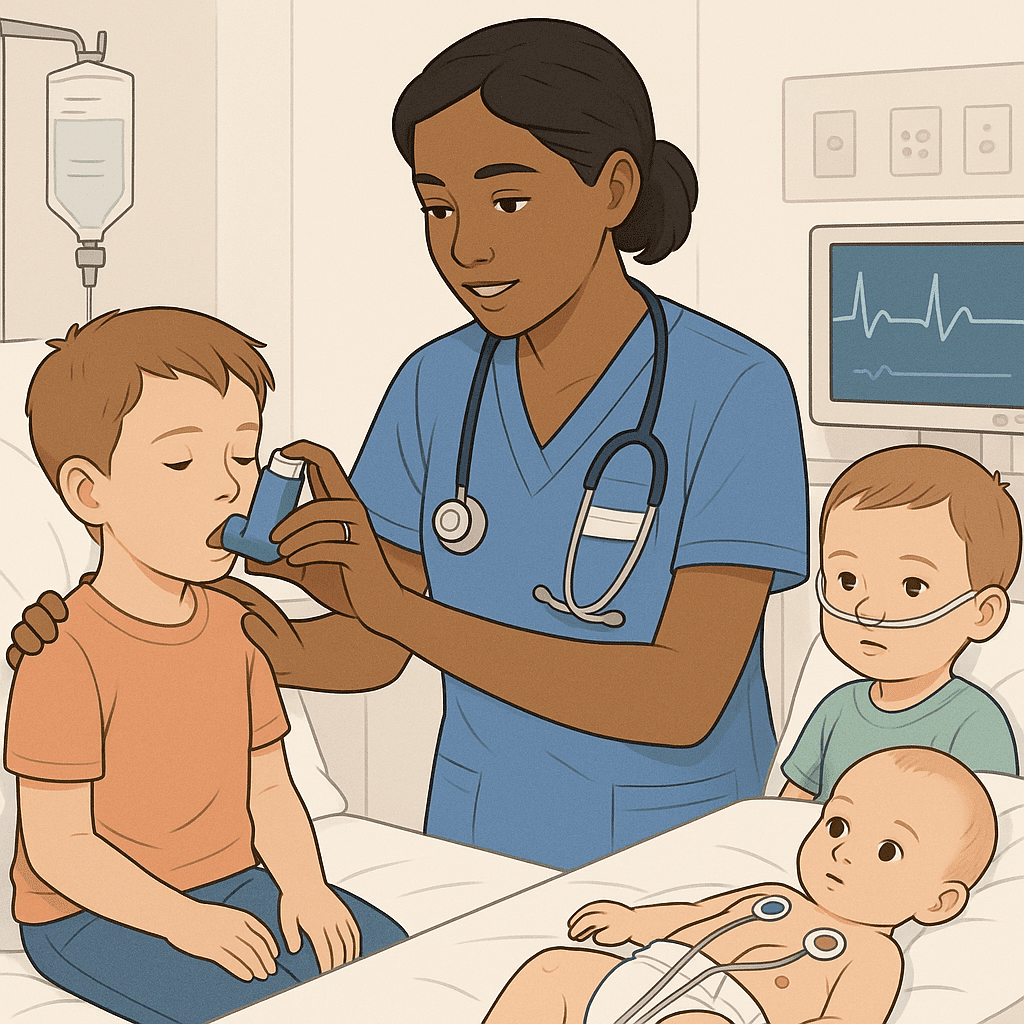As a registered nurse (RN nurse) or nursing student preparing for the NCLEX, mastering common pediatric disorders is essential. Pediatric patients present unique challenges, and safe nursing care depends on recognizing signs, understanding treatments, and applying evidence-based practice. This guide breaks down three high-yield disorders – asthma, RSV, and congenital heart defects – with nursing notes that support clinical practice and exam success.
🌬️ Asthma in Pediatrics
Asthma is one of the most common chronic conditions affecting children worldwide.
Key Points for Nurses:
- Pathophysiology: Chronic inflammation and narrowing of the airways.
- Symptoms: Wheezing, coughing (especially at night), dyspnea, chest tightness.
- Triggers: Allergens, exercise, cold air, viral infections.
Nursing Care for NCLEX:
- Administer short-acting beta-agonists (SABAs) such as albuterol for acute episodes.
- Teach families about inhaler use with a spacer.
- Educate on trigger avoidance (dust, smoke, pets).
- Monitor oxygen saturation and respiratory effort closely.
🔑 NCLEX Tip: If a pediatric patient in distress does not respond to bronchodilators, anticipate possible intubation or advanced respiratory support.
🦠 Respiratory Syncytial Virus (RSV)
RSV is a highly contagious virus and a leading cause of bronchiolitis in infants.
Symptoms to Watch For:
- Nasal flaring, retractions, grunting.
- Tachypnea and apnea in severe cases.
- Decreased feeding and lethargy.
Nursing Care for NCLEX:
- Implement droplet and contact precautions.
- Provide humidified oxygen and IV fluids as needed.
- Suction nasal passages to maintain airway patency.
- Educate parents on hand hygiene and limiting exposure to sick contacts.
🔑 NCLEX Tip: Palivizumab (Synagis) is given as prophylaxis for high-risk infants (e.g., premature or congenital heart disease).
❤️ Congenital Heart Defects (CHDs)
Congenital heart defects are structural heart abnormalities present at birth.
Two Main Types:
- Cyanotic Defects: Low oxygen levels, “blue baby” appearance (e.g., Tetralogy of Fallot).
- Acyanotic Defects: Increased pulmonary blood flow, but no cyanosis (e.g., ASD, VSD).
Nursing Care for NCLEX:
- Monitor for failure to thrive and poor feeding.
- Observe for tachypnea, sweating, and fatigue during feeds.
- Administer diuretics or digoxin as prescribed to improve cardiac function.
- Prepare families for surgical interventions when indicated.
🔑 NCLEX Tip: The VEAL CHOP method is often used for fetal heart monitoring but understanding hemodynamic changes in CHDs is equally vital for safe pediatric care.
📚 Why This Matters for Nursing Students
- These disorders frequently appear in NCLEX-style questions.
- They are also critical in real-world pediatric practice, where early recognition and intervention can be life-saving.
- Having pediatric content in a nursing bundle ensures comprehensive preparation for both exams and clinical work.
✅ Final Notes for Nurses
For every RN nurse or nursing student, focusing on pediatric disorders like asthma, RSV, and congenital heart defects strengthens both exam readiness and bedside care. Incorporating these topics into your nursing bundle is the smartest way to stay prepared for the NCLEX and to provide safe, compassionate care to your youngest patients.

